Powellite is a mineral that belongs to the broader group of minerals known as molybdates and tungstates. It is specifically classified as a calcium molybdate, with the chemical formula Ca(MoO₄). The name “Powellite” is derived from the mineralogist John Allan Powell, who made significant contributions to the field of mineralogy.

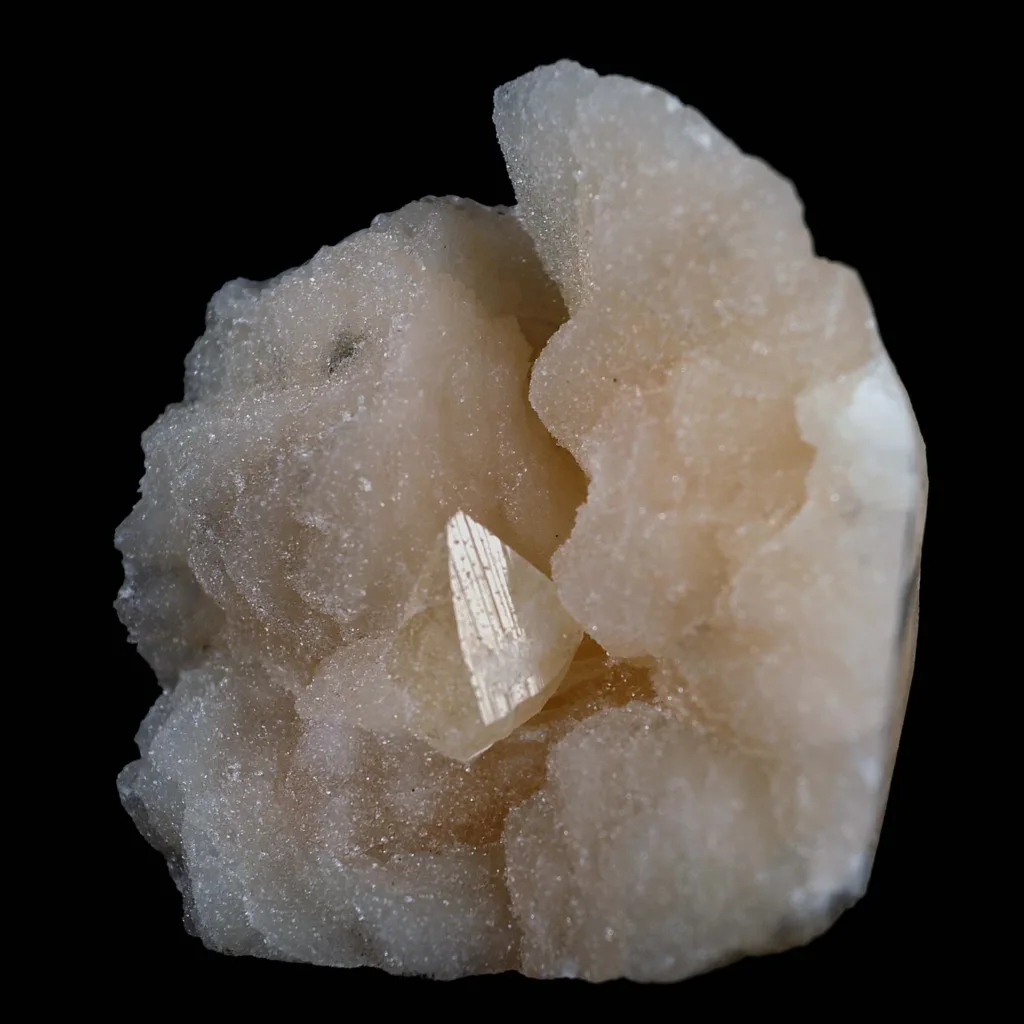

Powellite typically occurs as a secondary mineral in oxidized hydrothermal ore deposits, often associated with other molybdenum-bearing minerals like molybdenite. It is known for its characteristic crystal structure and can exhibit a range of colors, including yellow, orange, brown, and even colorless. Powellite’s vibrant colors and distinct crystal habits make it a popular mineral among collectors and enthusiasts.
One of the noteworthy properties of Powellite is its fluorescence under ultraviolet (UV) light. Depending on the specific elements present as impurities in the crystal lattice, Powellite can fluoresce in various colors, adding to its visual appeal.
Beyond its aesthetic value, Powellite also has some industrial applications. It can be used as a minor source of molybdenum, which is an important element in various industrial processes, including steel production, electronics, and catalysis.
In summary, Powellite is a calcium molybdate mineral that is valued for its colorful appearance, distinctive crystal structure, and fluorescence properties. It has both geological significance in hydrothermal ore deposits and practical applications in certain industrial processes.
Chemical composition and crystal structure

The chemical composition of Powellite is represented by the formula Ca(MoO₄), indicating that it consists of calcium (Ca) cations bonded to molybdate (MoO₄) anions. This composition places Powellite within the broader category of molybdate minerals. The molybdate anion consists of one molybdenum atom (Mo) bonded to four oxygen atoms (O) in a tetrahedral arrangement.
Powellite’s crystal structure is based on a tetragonal system, which means that its crystal lattice is characterized by three axes at right angles to each other, two of which are equal in length while the third is longer or shorter. Within this tetragonal framework, the calcium cations and molybdate anions are arranged in a specific pattern, giving rise to Powellite’s distinctive crystal structure.
The crystal structure of Powellite can be more accurately described as layered. The layers are formed by sheets of interconnected MoO₄ tetrahedra. Calcium cations are located between these sheets, occupying spaces between the tetrahedra. This layered arrangement contributes to the mineral’s unique physical and optical properties.
One of the notable features of Powellite is its tendency to exhibit strong fluorescence under ultraviolet (UV) light. This fluorescence is a result of impurities or trace elements that are present in the crystal lattice. The exact nature of these impurities can vary, leading to different fluorescent colors. This property adds to Powellite’s visual appeal and makes it a sought-after mineral among collectors.
In summary, Powellite’s chemical composition is Ca(MoO₄), indicating the presence of calcium and molybdate ions. Its crystal structure is based on a tetragonal system, with a layered arrangement of MoO₄ tetrahedra and calcium cations. The presence of impurities in the crystal lattice gives rise to its characteristic fluorescence under ultraviolet light.
Formation and Occurrence of Powellite
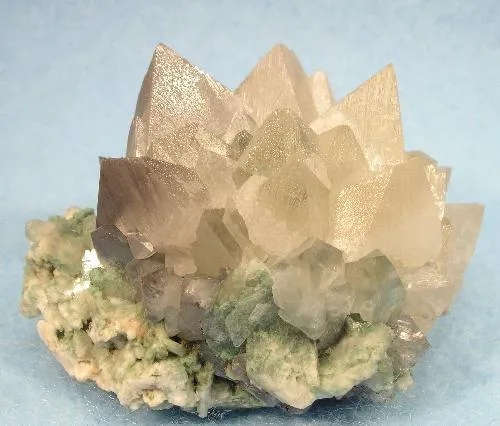
Powellite typically forms in oxidized hydrothermal environments, which are settings where hot fluids interact with rocks and minerals near the Earth’s surface. It often occurs as a secondary mineral, meaning it forms through processes involving the alteration of pre-existing minerals. The formation of Powellite is closely related to the presence of molybdenum-bearing minerals and the availability of calcium and other necessary elements.
Geological Environments: Powellite is commonly found in various geological settings, including:
- Porphyry Copper Deposits: Powellite can be associated with porphyry copper deposits, which are large mineralized zones found in the upper parts of intrusive igneous complexes. These deposits are formed by the interaction of hydrothermal fluids with host rocks, and molybdenum is often present as a minor component in these systems.
- Skarn Deposits: Skarns are contact metamorphic zones formed when hot fluids interact with carbonate-rich rocks (such as limestone or marble). Molybdenum-rich fluids can lead to the formation of Powellite in skarn deposits.
- Vein and Replacement Deposits: Powellite can also occur in veins and replacement deposits where mineral-rich fluids have infiltrated fractures and voids in rocks, leading to the formation of secondary minerals.
- High-Temperature Hydrothermal Systems: In some cases, Powellite can form in high-temperature hydrothermal systems associated with volcanic activity.
Relationship with Ore Deposits and Mineralization Processes: Powellite’s presence is often indicative of molybdenum mineralization within ore deposits. Molybdenum is commonly associated with various metal ore deposits, and Powellite can form as a result of the alteration of primary molybdenum-bearing minerals like molybdenite (MoS₂). As hydrothermal fluids circulate through rocks, they can leach out molybdenum from primary minerals and deposit it in secondary forms like Powellite when conditions such as temperature, pressure, and chemical composition are appropriate.
Factors Influencing Powellite Formation: Several factors influence the formation of Powellite:
- Source of Molybdenum: The presence of primary molybdenum minerals in the host rocks or ore deposits serves as a source for the molybdenum needed to form Powellite.
- Availability of Calcium: The availability of calcium ions is crucial for the formation of Powellite’s calcium molybdate structure.
- Fluid Composition: The chemical composition of hydrothermal fluids, including their pH, temperature, and mineral content, affects the minerals that can form during alteration.
- Temperature and Pressure: The temperature and pressure conditions of the hydrothermal system influence the stability of Powellite and other minerals.
- Time: The duration of hydrothermal activity plays a role in determining the extent to which mineral alteration can occur.
In summary, Powellite forms in oxidized hydrothermal environments, often in association with molybdenum-bearing minerals. It occurs in a variety of geological settings, including porphyry copper deposits, skarn deposits, vein systems, and high-temperature hydrothermal systems. The formation of Powellite is influenced by factors such as the availability of molybdenum, calcium, fluid composition, temperature, pressure, and the duration of mineralizing processes.
Physical Properties and Identification of Powellite
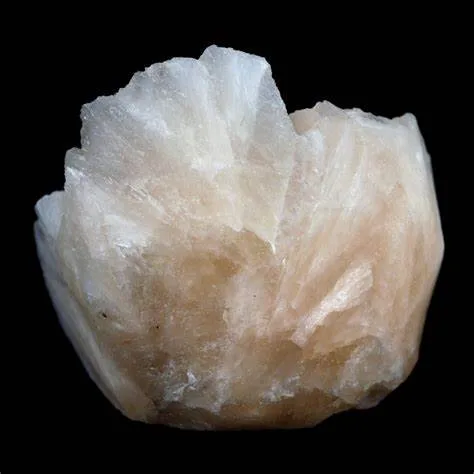
Color Variations and Appearance: Powellite exhibits a range of colors, including yellow, orange, brown, and even colorless. These color variations are often attributed to the presence of different impurities or trace elements within the crystal lattice. The mineral can occur as prismatic crystals or columnar aggregates, and it may also form crusts or coatings on other minerals. Powellite’s luster is typically adamantine to subadamantine, giving it a shiny and reflective appearance.
Fluorescence and Luminescence Properties: One of the most distinctive characteristics of Powellite is its strong fluorescence under ultraviolet (UV) light. When exposed to UV light, Powellite can emit a visible light that is often different in color from its normal appearance. The exact fluorescent color depends on the specific impurities present in the crystal structure. This property makes Powellite stand out and is a valuable diagnostic feature for its identification.
Mohs Hardness, Cleavage, and Fracture:
- Mohs Hardness: Powellite has a hardness of around 3.5 to 4 on the Mohs scale. This means that it can be scratched by materials with greater hardness, such as a steel nail or a copper penny.
- Cleavage: Powellite has a distinct basal cleavage, which means it can be easily split along specific planes to form flat surfaces. The cleavage planes are a result of the layered structure of the mineral’s crystal lattice.
- Fracture: The mineral’s fracture is typically uneven to conchoidal. Uneven fractures are characterized by irregular and jagged surfaces, while conchoidal fractures exhibit smooth, curved surfaces reminiscent of broken glass.
Other Identifying Features:
- Density: The density of Powellite can vary, but it generally falls within the range of 4.3 to 4.5 g/cm³.
- Transparency: Powellite is often transparent to translucent, allowing light to pass through with varying degrees of clarity.
- Streak: The streak of Powellite is pale yellow to white, which is the color of the mineral when it is powdered. This can be observed by rubbing the mineral against an unglazed porcelain plate to produce a streak.
- Crystal Habit: Powellite typically forms as prismatic crystals or columnar aggregates. It can also occur in coatings, crusts, and botryoidal (grape-like) formations.
In summary, Powellite’s identification involves observing its color variations, fluorescence under UV light, and physical properties such as hardness, cleavage, and fracture characteristics. Its fluorescence, in particular, is a distinct feature that sets it apart from many other minerals. These identifying features, along with its crystal habits and other properties, help mineralogists and collectors differentiate Powellite from other minerals.
Uses and Applications of Powellite
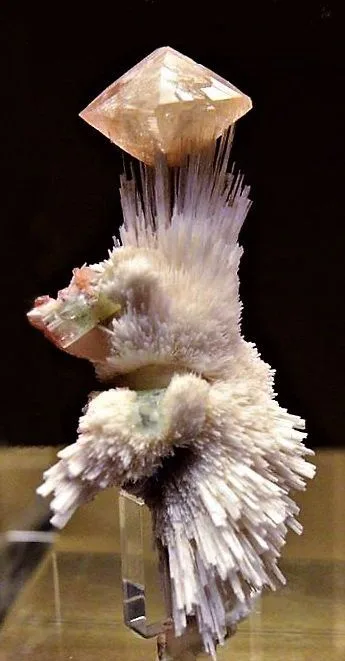
Industrial Applications:
- Minor Molybdenum Source: While not a primary source of molybdenum, Powellite can contribute as a secondary source of this essential element. Molybdenum has significant industrial applications, particularly in the production of steel and other alloys. It enhances the strength, hardness, and corrosion resistance of metals, making them suitable for various industrial uses.
- Catalysis: Molybdenum compounds, including those derived from minerals like Powellite, are used as catalysts in various chemical reactions. They play a crucial role in promoting and accelerating chemical processes in industries such as petroleum refining and the production of chemicals.
Collectibility and Gemology:
- Mineral Collecting: Powellite’s vibrant color variations, fluorescence properties, and unique crystal structure make it highly sought after by mineral collectors. Collectors value Powellite specimens for their aesthetic appeal and rarity, leading to a thriving market for these minerals.
- Gemology: While not commonly used as a gemstone due to its relative softness, attractive Powellite specimens with intense colors and strong fluorescence can be considered collector’s items in the field of gemology. These specimens may be cut and polished to create display pieces rather than traditional jewelry.
- Mineral Identification: Gemologists and mineralogists often study Powellite and similar minerals to better understand their properties and characteristics. This knowledge contributes to the broader understanding of mineral formations, crystallography, and geological processes.
In summary, Powellite finds applications in industrial sectors as a minor molybdenum source and as a catalyst. It holds significance in the fields of mineral collecting and gemology due to its aesthetic qualities, vibrant colors, fluorescence, and unique crystal structure. While not a gemstone in the traditional sense, it has collectible value among enthusiasts and contributes to the study of minerals and gemology.
Geographical Distribution Major Deposits

Powellite is a mineral that occurs in various geological settings, often associated with molybdenum-rich environments. While it is not as widespread as some other minerals, it can be found in different parts of the world. Some major deposits and regions known for Powellite occurrences include:
- USA: Powellite has been found in several locations in the United States, including Colorado, Nevada, Arizona, and California. These deposits are often associated with porphyry copper systems and other hydrothermal mineralization.
- Chile: Chile is known for its significant mineral wealth, and Powellite can be found in various copper and molybdenum-rich deposits within the country. These deposits are commonly associated with the Andes Mountains.
- Peru: Like Chile, Peru is another South American country with substantial mineral resources. Powellite can be found in deposits associated with copper and molybdenum mineralization.
- Canada: Some occurrences of Powellite have been reported in Canada, particularly in areas with hydrothermal activity and associated mineral deposits.
- Russia: Powellite has been found in Russia, including in the Ural Mountains region, which is known for its diverse mineral deposits.
- Kazakhstan: This Central Asian country is home to various mineral deposits, and Powellite occurrences have been reported in association with molybdenum and copper mineralization.
- Australia: Powellite can be found in parts of Australia, including in mineralized areas associated with copper and molybdenum.
- China: Some occurrences of Powellite have been reported in China, particularly in regions with active geological processes.
It’s important to note that the availability of Powellite and its distribution can vary within these regions, and the mineral is often found as a secondary mineral in hydrothermal ore deposits. Additionally, ongoing geological exploration and research might lead to the discovery of new occurrences and deposits in the future.
Importance in Industry and Technology
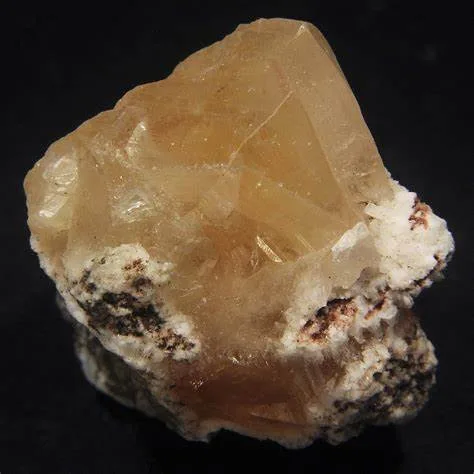
Role in Ceramic and Glass Industry: Powellite, due to its molybdate and calcium composition, can have applications in the ceramic and glass industries. Molybdenum compounds, including those derived from minerals like Powellite, are used as colorants and opacifiers in ceramic glazes and glass formulations. They can impart a range of colors to ceramics and glasses, from yellow to orange. These compounds are often added in small amounts to achieve specific colors or visual effects in finished products.
In addition to coloration, molybdenum compounds can enhance the physical properties of ceramics and glass. They can improve the stability of pigments at high temperatures, increase the durability of glazes, and influence the refractive properties of glasses. The use of molybdenum compounds like those found in Powellite contributes to the diversity of colors and effects achievable in ceramic and glass products.
Role in Nuclear Applications: Molybdenum, one of the primary components of Powellite, has applications in nuclear technology. Some of these applications include:
- Nuclear Reactors: Molybdenum is used in the construction of nuclear reactors due to its ability to withstand high temperatures and corrosive environments. It is used in components such as reactor vessels and control rods.
- Radiopharmaceuticals: Certain molybdenum isotopes are used in the production of radiopharmaceuticals for medical imaging and treatments. Technetium-99m, a radioactive isotope of technetium, is generated from molybdenum-99 decay and is widely used in medical procedures like single-photon emission computed tomography (SPECT).
- Research Reactors: Molybdenum is used in research reactors to produce isotopes that have various scientific and medical applications.
- Nuclear Fusion: Molybdenum materials are being investigated for their use in nuclear fusion reactors, which aim to replicate the energy production of the sun by fusing atomic nuclei. Molybdenum’s high melting point and resistance to radiation make it a potential candidate for plasma-facing materials in fusion devices.
It’s important to note that while molybdenum compounds are used in these nuclear applications, they are often derived from molybdenite or other molybdenum-bearing minerals rather than Powellite specifically. Nonetheless, Powellite’s role in providing molybdenum to these applications highlights its broader significance in technology and industry.




































